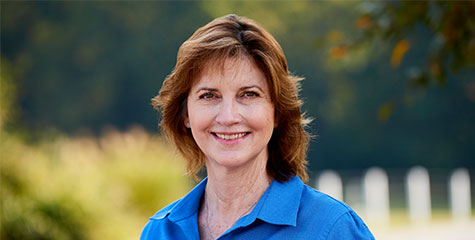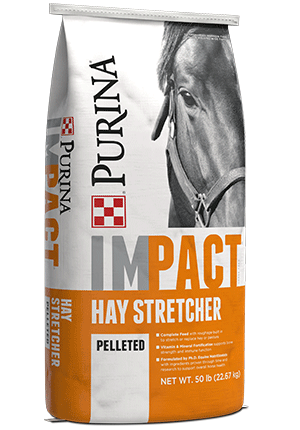
Proper Foal Feeding Through the First Year
Life Stage : Breeding & Growing
Regardless of the actual birth date, most foals are considered a year older at the turn of the New Year.
These youngsters may not be 12 months old for another three - four months, so they are still weanlings from a stage of growth perspective. The transition from suckling foal to weanling is a tremendous change, going from mare’s milk and a little feed to a total diet of dry feed and hay/pasture. As the young horse grows and transitions from weanling to yearling, nutritional demands continue changing, although not quite as dramatically. The rate of growth begins to slow down, but with a larger body mass to maintain, the nutritional requirements are still greater than they will be at maturity.
Weanlings at four - six months of age usually weigh 370 – 550 lbs. They are growing at very rapid rates of 2 – 2.5 lbs per day. Mare’s milk provides calories, very high quality protein, calcium, phosphorus and relatively lower amounts of other nutrients such as vitamin C, B-vitamins and trace minerals. After weaning, it is important to provide a quality feed ration that replaces the high quality protein, calories, calcium and phosphorus to continue supporting muscle, tendon and bone growth. The diet must also provide a balance of vitamins and minerals. Young horses in their first year of life should be fed a 14 – 16% protein feed formulated to support growth and development. Attention should be paid to the amino acid balance provided by the protein. The 14% protein provided in a typical calf-creep feed or economy horse feed doesn’t provide the same amino acid balance as Purina® Strategy horse feed, a 14% protein feed formulated to support foal growth and development. Both products may have the same amount of protein but different protein sources and subsequently different amino acid content. This can impact the growth rate and development of the young growing horse. Before weaning, while foals are drinking mares’ milk, they may look great. However, as they grow through their first year, they will begin to look rougher, become lanky and often lose muscle development over their toplines if they are fed like mature horses. Yearlings in such condition are showing that they aren’t receiving proper nutritional support for growth.
As youngsters approach 12 months of age, they should weigh 65 – 70% of their ideal mature weight. If they have the genetics to weigh 1100 lbs at maturity, they should weigh 710 – 770 lbs as yearlings. The rate of growth will have slowed to about a pound per day, but the diet must support that growth rate while still providing adequate protein, vitamins and minerals for proper bone maturation and muscle development. Because the horse’s digestive capacity for forage and the ability to digest that forage is increasing with age, a greater proportion of the diet will be hay or pasture during this time. So, while growing horses still need feed rations that supply the proper nutrition for growth, they may not need an increase in amount fed. The increased intake of quality hay or pasture will meet a greater percentage of their nutritional needs Youngsters fed a quality feed ration that supports their stage of growth, along with quality hay or pasture, will grow properly through their first year and be ready to start training under saddle as long yearlings or two-year olds.
These youngsters may not be 12 months old for another three - four months, so they are still weanlings from a stage of growth perspective. The transition from suckling foal to weanling is a tremendous change, going from mare’s milk and a little feed to a total diet of dry feed and hay/pasture. As the young horse grows and transitions from weanling to yearling, nutritional demands continue changing, although not quite as dramatically. The rate of growth begins to slow down, but with a larger body mass to maintain, the nutritional requirements are still greater than they will be at maturity.
Weanlings at four - six months of age usually weigh 370 – 550 lbs. They are growing at very rapid rates of 2 – 2.5 lbs per day. Mare’s milk provides calories, very high quality protein, calcium, phosphorus and relatively lower amounts of other nutrients such as vitamin C, B-vitamins and trace minerals. After weaning, it is important to provide a quality feed ration that replaces the high quality protein, calories, calcium and phosphorus to continue supporting muscle, tendon and bone growth. The diet must also provide a balance of vitamins and minerals. Young horses in their first year of life should be fed a 14 – 16% protein feed formulated to support growth and development. Attention should be paid to the amino acid balance provided by the protein. The 14% protein provided in a typical calf-creep feed or economy horse feed doesn’t provide the same amino acid balance as Purina® Strategy horse feed, a 14% protein feed formulated to support foal growth and development. Both products may have the same amount of protein but different protein sources and subsequently different amino acid content. This can impact the growth rate and development of the young growing horse. Before weaning, while foals are drinking mares’ milk, they may look great. However, as they grow through their first year, they will begin to look rougher, become lanky and often lose muscle development over their toplines if they are fed like mature horses. Yearlings in such condition are showing that they aren’t receiving proper nutritional support for growth.
As youngsters approach 12 months of age, they should weigh 65 – 70% of their ideal mature weight. If they have the genetics to weigh 1100 lbs at maturity, they should weigh 710 – 770 lbs as yearlings. The rate of growth will have slowed to about a pound per day, but the diet must support that growth rate while still providing adequate protein, vitamins and minerals for proper bone maturation and muscle development. Because the horse’s digestive capacity for forage and the ability to digest that forage is increasing with age, a greater proportion of the diet will be hay or pasture during this time. So, while growing horses still need feed rations that supply the proper nutrition for growth, they may not need an increase in amount fed. The increased intake of quality hay or pasture will meet a greater percentage of their nutritional needs Youngsters fed a quality feed ration that supports their stage of growth, along with quality hay or pasture, will grow properly through their first year and be ready to start training under saddle as long yearlings or two-year olds.





